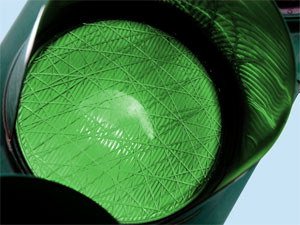University of Minnesota startup to improve traffic flow on congested roads

Contacts:
John Merritt, Office of the VP for Research, merri205@umn.edu, (612) 624-2609
Jeff Falk, University News Service, jfalk@umn.edu, (612) 626-1720
Rhonda Zurn, College of Science and Engineering, rzurn@umn.edu, (612) 626-7959
MINNEAPOLIS / ST. PAUL (11/01/2011) — Based on engineering research from the University of Minnesota, SMART Signal Technologies, Inc., will commercialize a system to better predict and manage the flow of traffic on roads controlled by traffic lights. The system could potentially cut down on traffic congestion and help drivers save both time and fuel.
Using data from existing traffic signal equipment, the system accurately calculates queue length at signalized intersections. These data, collected in real time and archived in a database, will allow cities across the state to better mediate the flow of traffic at peak times using real time performance measures provided by the system.
“The technology itself provides both hardware and software solutions to evaluate the performance of traffic signals and measures the traffic conditions on signalized roads,” explains Henry Liu, co-inventor of the technology and a civil engineering professor in the University of Minnesota’s College of Science and Engineering.
The Systematic Monitoring of Arterial Road Traffic (SMART) Signal will also give drivers a more accurate prediction of travel times by accounting for time spent waiting at traffic lights. Unlike traffic information on highways, there isn’t a system currently in place to accurately track congestion on roads with traffic signals with the existing facilities.
“Once you get off the freeway, people have no idea how long it takes to get through lights,” says Ken Shain, president and CEO of SMART Signal. “Because current travel information is based on whether the light is red or green.” Shain hopes to make these travel time data available to drivers. He’s confident the added element of queue length processing will result in more accurate travel time predictions.
The St. Paul startup aims to make the traffic management system affordable for municipalities to implement by allowing them to use existing equipment. The SMART Signal system has already been field tested on three major arterials in Minnesota: Highway 55 in Golden Valley, France Avenue in Bloomington, and Prairie Center Drive in Eden Prairie. It is also being used in Pasadena, California.
This technology was invented by civil engineering professor Henry Liu and his research team. The research was funded by the Minnesota Department of Transportation, Minnesota Local Road Research Board, the University of Minnesota’s Intelligent Transportation Systems Institute, and Hennepin County.
More information:
SMART Signal Technologies company website: http://www.smartsignaltech.com/
SMART Signal research project website: http://signal.umn.edu/
